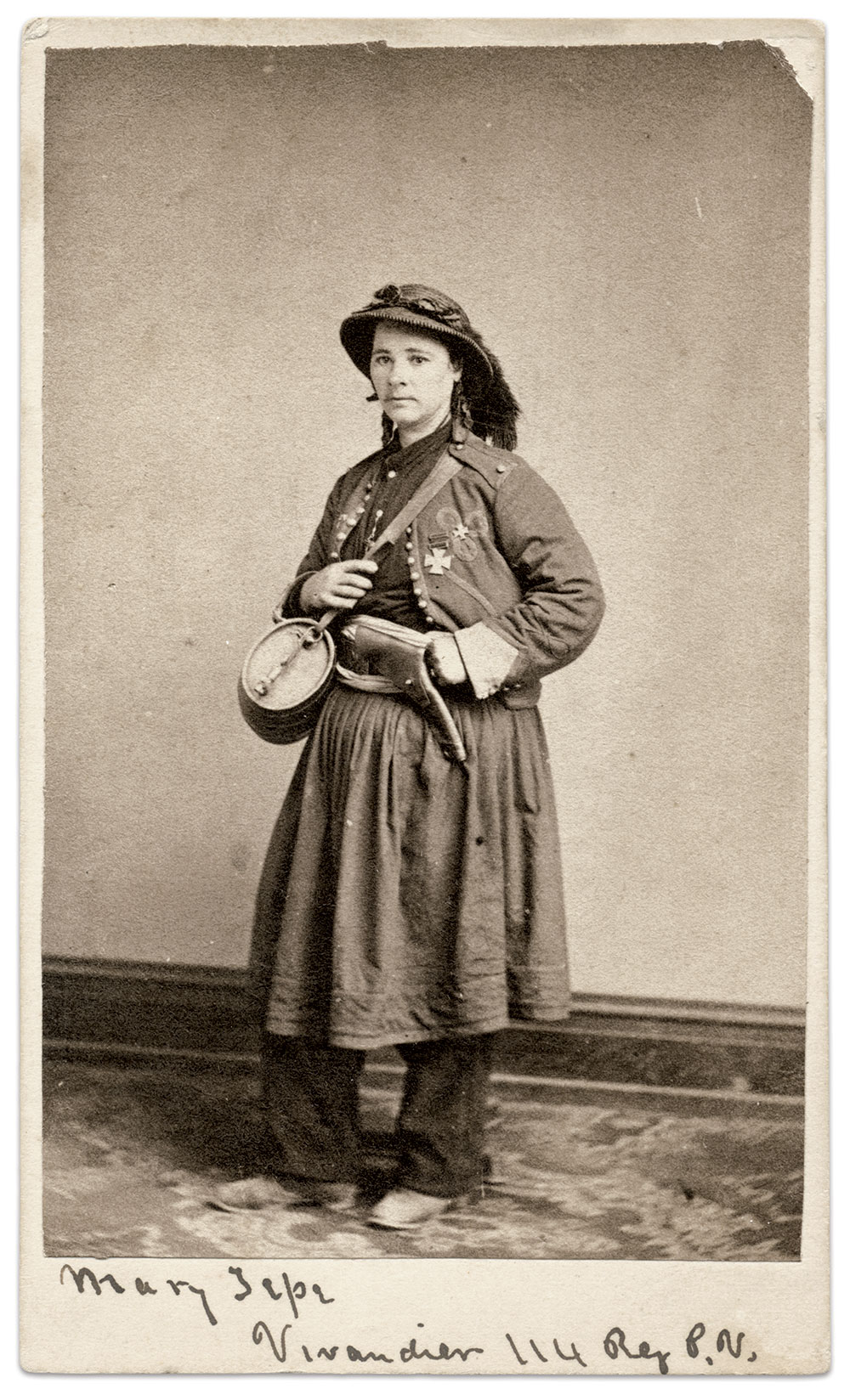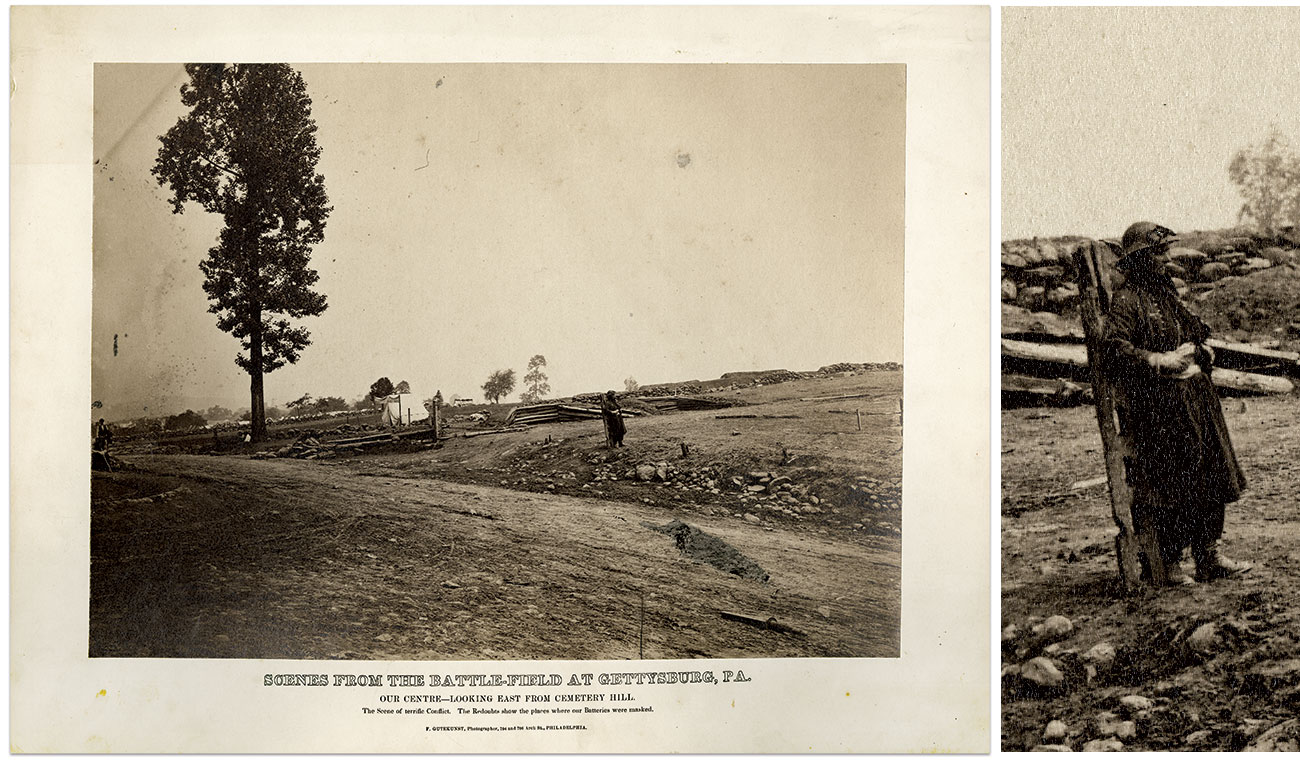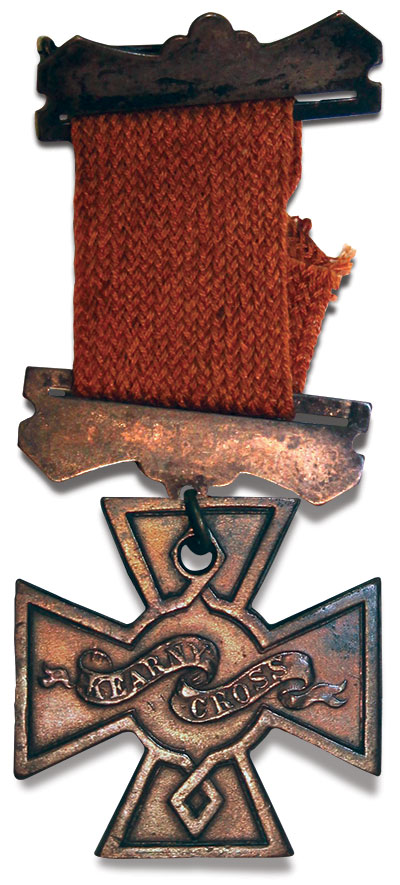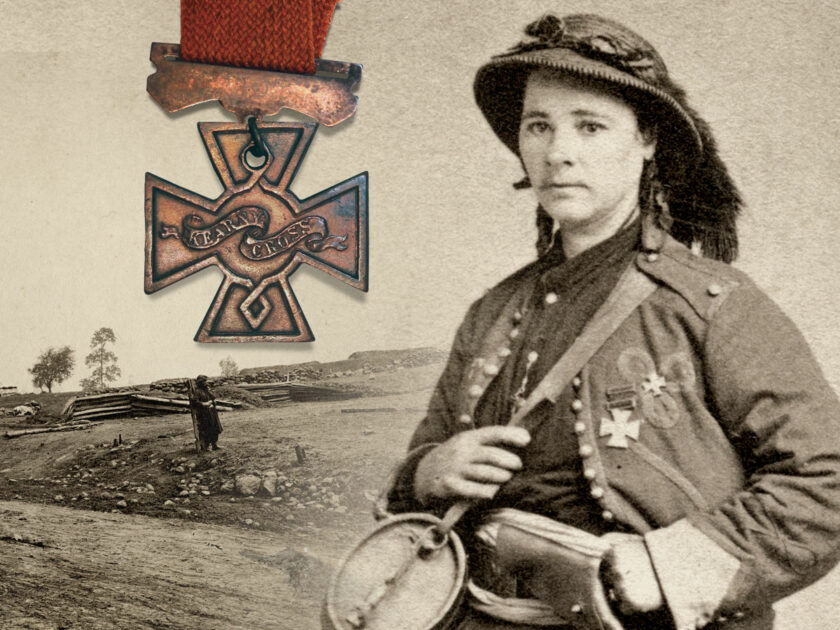By Melissa A. Winn
While 19th century social conventions constrained many American women to the homefront or hospitals during the Civil War, French immigrant Marie Tepe would not be obliged. Her feisty spirit drew her to the front lines from its start, where, according to a local newspaper reporting about the First Battle of Bull Run, Marie “showed she was a better soldier than many of the men. She alternately fought and ministered to the needs of the wounded. [And] apparently cared nothing for the singing of scores of bullets around her.”
“French Mary” as she was known, was born Marie Brose in Brest, France, on Aug. 24, 1834, to a Turkish father and French mother. The details of her early life are vague and varied. One newspaper stated Marie had married a French seaman named Belmont Tebbe at age 15 and traveled with him to America in 1854; other newspapers claimed her father had raised her and brought her with him when he emigrated to Philadelphia.

At some point after her arrival, Marie wed Philadelphia tailor Bernhard Tepe. In June 1861, when he enlisted as a private in the 27th Pennsylvania Infantry, she accompanied him to war. He wanted her to stay in Philadelphia and manage the tailor shop in his absence, but she had her own plans. Marie marched from Philadelphia with the 27th, perhaps emulating French vivandières, women officially attached to French regiments as sutlers or canteen keepers. Marie carried a gallon-and-a-half keg thrown over her left shoulder from which she distributed whiskey or water. She sold tobacco, hams, whiskey, and other miscellanies to soldiers in camp. After the fighting at Bull Run in July 1861, she worked in the regimental hospital.
In late 1861, Marie left the regiment and returned home after her husband and some of his intoxicated comrades stole $1,600 from her tent. She later called it “the only insult” she received during her time in the army.
Her tour of duty was about to be extended, thanks in part to Charles H.T. Collis, a son of Ireland who had served in the 18th Pennsylvania Infantry, a three-month regiment, and then organized an independent company, the Zouaves d’Afrique. The company performed well, and in June 1862 Collis arrived in Philadelphia to recruit a full Zouave d’Afrique regiment, including a vivandière.
Marie got the job. She embraced the role, making it and her trademark Zouave uniform her own, complete with a lady’s bonnet to replace the white turban, a red-fringed skirt, and buttons to adorn the Zouave jacket. Unlike other vivandières, she also holstered a .44 caliber Remington revolver, which she wasn’t afraid to use. The Zouaves adopted her as the “daughter of the regiment,” and took care of her as if she were their own. For her work, Marie received soldier’s pay and an additional 25 cents each day for hospital duty.

Collis’ Zouaves mustered into service as the 114th Pennsylvania Infantry. The regiment’s first combat, at Fredericksburg on Dec. 13, 1862, was brutal. Officers and men crossed the lower pontoon bridge on the Rappahannock River and made their way to the field now known as Slaughter Pen Farm. Marie accompanied them, tending to the wounded and dispensing water from her keg. When an officer ordered her to the rear for her safety, she yelled back, “Maybe I am not so scared as you are.” In the next moment she was slightly injured in the ankle by a bullet or exploding shell.
Following the battle, Col. Collis wrote Marie a letter thanking her for her bravery. The regiment’s lieutenant colonel, Federico Cavada, presented her with a silver cup inscribed “To Marie, for noble conduct on the field of battle.”
At the Battle of Chancellorsville on May 3, 1863, Marie again showed her mettle as the regiment was decimated, losing 173 killed and wounded, among them 24 of 27 officers. One of the regiment’s musicians later recounted that Marie, “often got within range of the enemy’s fire whilst parting with the contents of her canteen among our wounded men. Her skirts were riddled by bullets.” Her keg was destroyed, which she replaced with a soon-to-be famous red, white, and blue keg, with the image of an eagle at one end and “French Mary, 114th Pennsylvania” inscribed at the other.

Collis nominated Marie for the Kearny Cross for her bravery at Chancellorsville. Of the 300 recipients, she and another vivandière, Anna Etheridge of the 3rd Michigan Infantry, were the only two women so honored. Marie and several other recipients in the 114th refused to wear the medal, believing it dishonored others who had also fought bravely but not been nominated. But she later donned it for a portrait.
Marie left her role as vivandière in 1864 when she returned to Pennsylvania with Corp. Richard Leonard of the Union’s 1st Maryland Cavalry, at the expiration of his enlistment. The two married, but the relationship ended in divorce in 1897.
Marie attended a reunion of the 114th Pennsylvania Zouaves in 1893. In 1898, suffering from rheumatism, she applied for a pension for her Fredericksburg ankle wound. No records exist showing she received one.
On May 14, 1901, destitute and suffering, Marie drank a lethal dose of poison. She was buried in an unmarked grave at First Saint Paul’s Evangelical Lutheran Cemetery in Pittsburgh, Pa. In 1988, the Sons of Union Veterans of the Civil War found her grave and marked it with a proper military headstone and a ceremony befitting the “daughter of the regiment.”
Melissa A. Winn has been enchanted with photography since childhood. Her career as a photographer and writer includes numerous publications, among them Civil War Times, America’s Civil War, and American History magazines. She is currently marketing manager for the American Battlefield Trust. Melissa collects Civil War photos and ephemera, with an emphasis on Dead Letter Office images and Gen. John A. Rawlins, chief of staff to Gen. Ulysses S. Grant. Melissa is a
MI Senior Editor. Contact her at melissaannwinn@gmail.com.
SPREAD THE WORD: We encourage you to share this story on social media and elsewhere to educate and raise awareness. If you wish to use any image on this page for another purpose, please request permission.
LEARN MORE about Military Images, America’s only magazine dedicated to showcasing, interpreting and preserving Civil War portrait photography.
VISIT OUR STORE to subscribe, renew a subscription, and more


1 thought on ““Daughter of the Regiment””
Comments are closed.